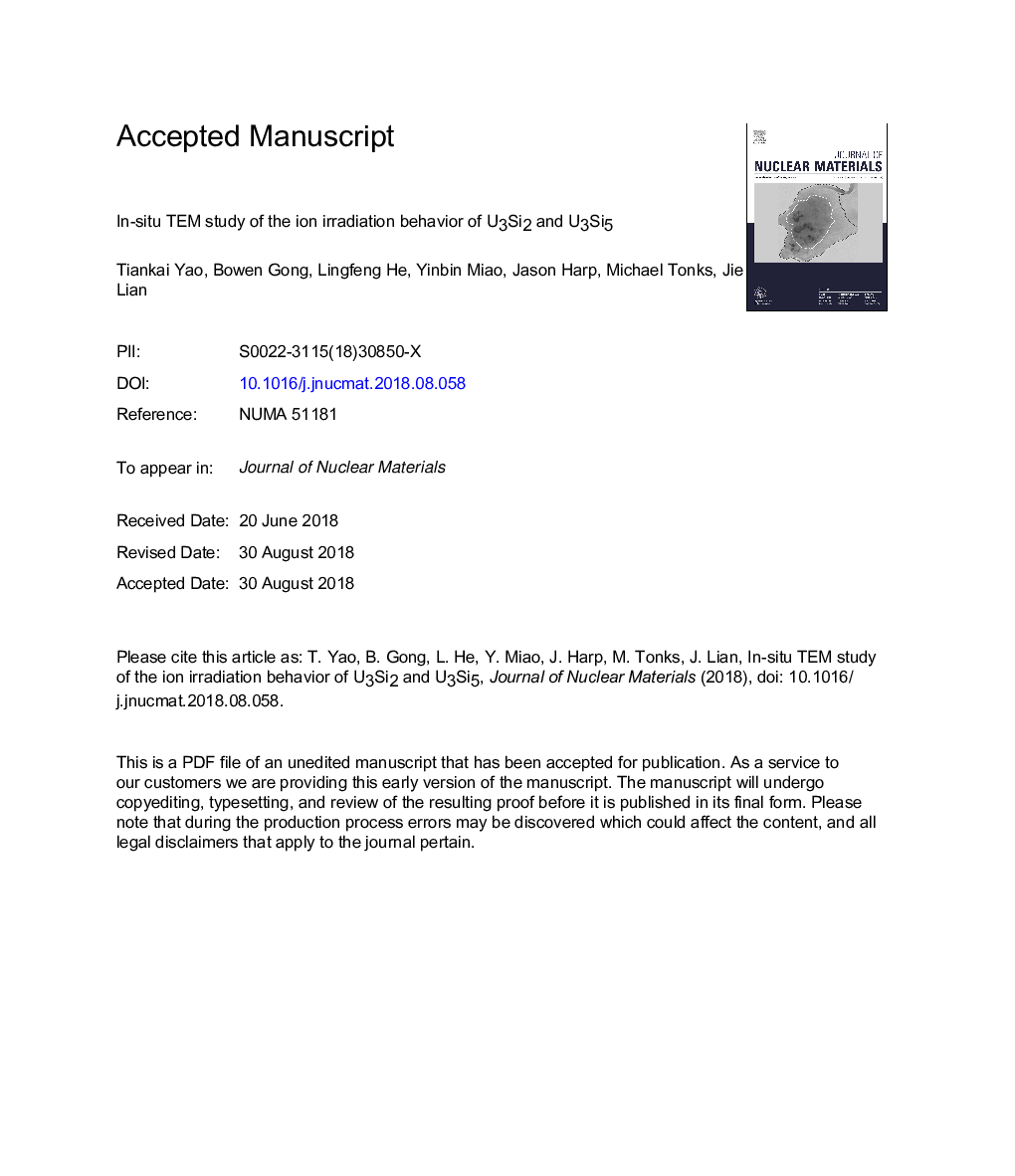| Article ID | Journal | Published Year | Pages | File Type |
|---|---|---|---|---|
| 8961439 | Journal of Nuclear Materials | 2018 | 25 Pages |
Abstract
U3Si2 and U3Si5 are two important uranium silicide phases currently under extensive investigation as potential fuel forms or components for light water reactors (LWRs) to enhance accident tolerance. In this paper, their irradiation behaviors are studied by ion beam irradiations with various ion mass and energies, and their microstructure evolution is investigated by in-situ transmission electron microscopy (TEM). U3Si2 can easily be amorphized by ion beam irradiations (by 1â¯MeV Ar2+ or Kr2+) at room temperature with the critical amorphization dose less than 1 dpa. The critical amorphization temperatures of U3Si2 irradiated by 1â¯MeV Kr2+ and 1â¯MeV Ar2+ ion are determined as 580â¯Â±â¯10â¯K and 540â¯Â±â¯5â¯K, respectively. In contrast, U3Si5 remains crystalline up to 8 dpa at room temperature and is stable against ion irradiation-induced amorphization up to â¼50 dpa by either 1â¯MeV Kr2+ or 150â¯KeV Kr+ at 623â¯K. These results provide valuable experimental data to guide future irradiation experiments, support the relevant post irradiation examination, and serve as the experimental basis for the validation of advanced fuel performance models.
Related Topics
Physical Sciences and Engineering
Energy
Nuclear Energy and Engineering
Authors
Tiankai Yao, Bowen Gong, Lingfeng He, Yinbin Miao, Jason M. Harp, Michael Tonks, Jie Lian,
